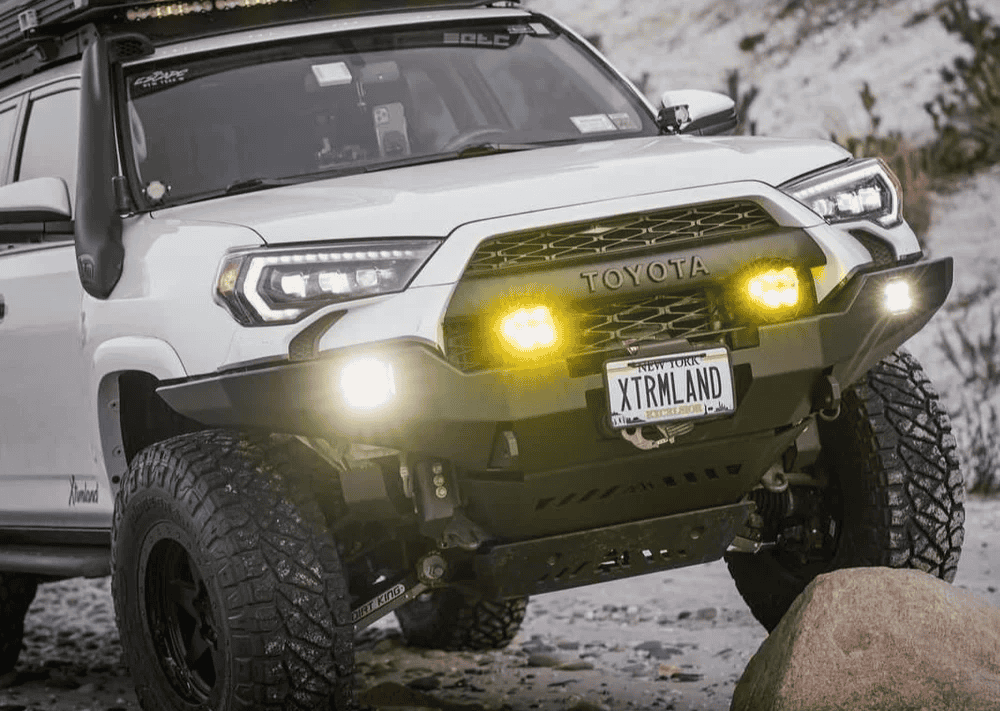Overland Vehicles

Snow changes everything about traction, clearance, and control. A winter focused overland rig starts with tire choice. Look for the three peak mountain snowflake symbol to ensure true winter performance, not just aggressive tread. Narrower section widths often cut down to firm snow, while siped blocks grip on ice. Chains remain the equalizer when roads glaze over. Know your local chain laws and practice installing chains in the driveway before a storm arrives.
Ground clearance matters when fresh snow drifts stack under the chassis. A modest lift paired with correctly valved suspension helps the vehicle float and reduces belly dragging in powder. Avoid excessive lift heights that raise the center of gravity and degrade stability on slick surfaces. Skid plates protect steering, oil pans, and transfer cases from hidden ice crusts that act like rough rock.
Momentum is a tool, not a crutch. Use steady throttle and gentle steering inputs to keep the tread biting. If you bog down, stop the spin early and shovel, then add traction aids rather than digging to the frame. Lockers can help climb through ruts but can also push the rig straight on tight turns. Engage thoughtfully and disengage before descending slick switchbacks.
Cold strains every system on the vehicle. Batteries lose capacity, fuel thickens, and water freezes where you least expect it. Pre trip checks should include coolant mix verification, fresh windshield fluid rated for deep cold, and inspection of belts and hoses. For diesel engines, blend winter fuel and consider anti gel additives during arctic snaps. Block heaters reduce cold starts and stress on lubricants.
Electrical systems demand attention. Lithium batteries require warm up before charging below freezing, so use heat pads or insulated enclosures with thermostats. Strategic insulation reduces heat loss while controlled ventilation prevents condensation from frosting interior panels. A carbon monoxide detector belongs in any cabin with fuel based heat.
Winter travel rewards patience and planning. Check avalanche forecasts where terrain warrants it, and avoid road cuts and gullies loaded with wind drift. Choose routes with bailout options and pay attention to storm timing. Whiteouts erase contrast and can hide cornices or ditches, so slow down and use reference markers.
Driving technique is deliberate and smooth. Start, steer, and stop with gentle inputs. On climbs, maintain a steady pace rather than stomping on the throttle. On descents, select a low gear early and let engine braking do most of the work. Traction control may cut needed power in deep snow, so know how to disable or adjust it when stuck and reactivate once moving.
Communications and navigation matter more when the landscape goes quiet. Carry a satellite messenger or beacon for emergency contact. GMRS or ham radios help coordinate with a group when cell service fades. Download offline maps and weather layers before leaving pavement. Pack spare gloves, a dry base layer, and chemical warmers in a grab bag so you can work outside the cab without losing dexterity.
When the platform is dialed and your skills match the conditions, winter overlanding becomes calm and methodical. The reward is solitude, crystal air, and trailheads that feel brand new under a fresh blanket of snow.
To translate this knowledge into a purpose built vehicle, review the range of builds on overland rigs. If you need targeted upgrades like heaters, insulation, power, or recovery systems, explore custom overland upfit details. For a sense of our process, craftsmanship, and client experience, see why choose OZK Customs. We design around real winter use, from subzero power strategies to snow ready traction and recovery packages.
Ready to head for the quiet roads of winter. Share your terrain, temperatures, and travel goals, and OZK will map a build that stays warm, tracks straight, and recovers smart when the snow stacks up.
Bring your winter build to life with OZK Customs. From cold proof insulation and heaters to power and recovery systems, we design and upfit for real snow travel. Tell us how and where you drive, and we will craft a rig that stays warm, capable, and dependable when the temperature drops.
ADDRESS:
6159 E Huntsville Rd, Fayetteville, AR 72701
PHONE:
(479) 326-9200
EMAIL:
info@ozkvans.com